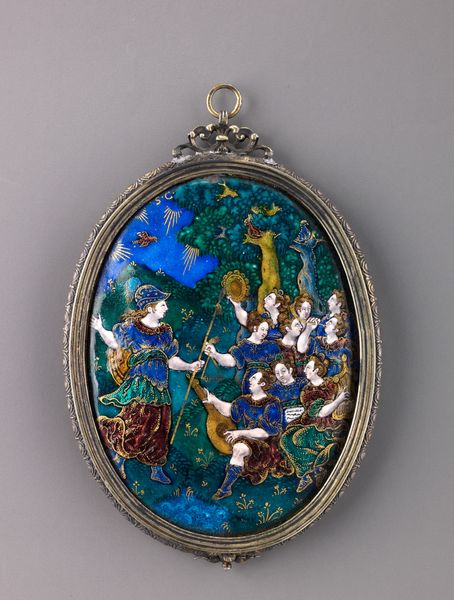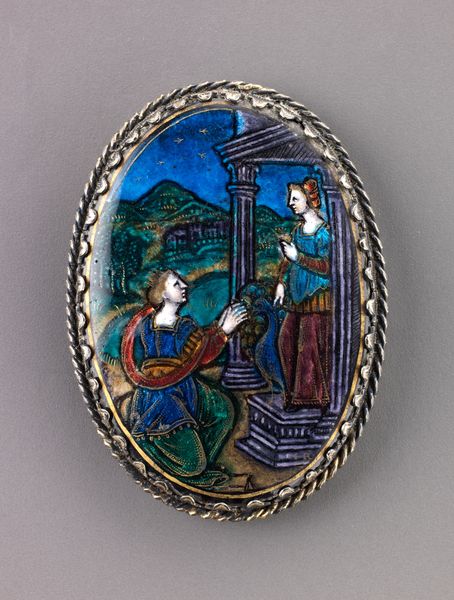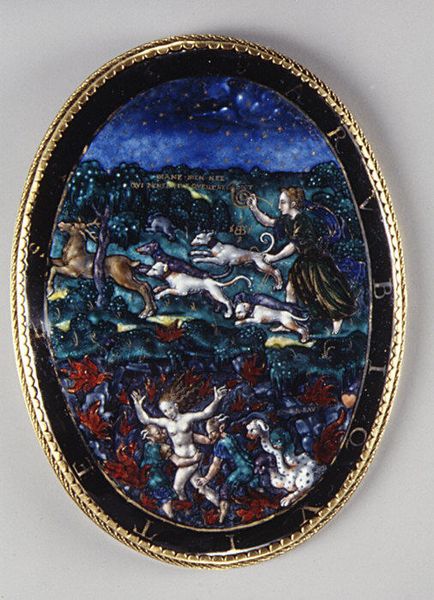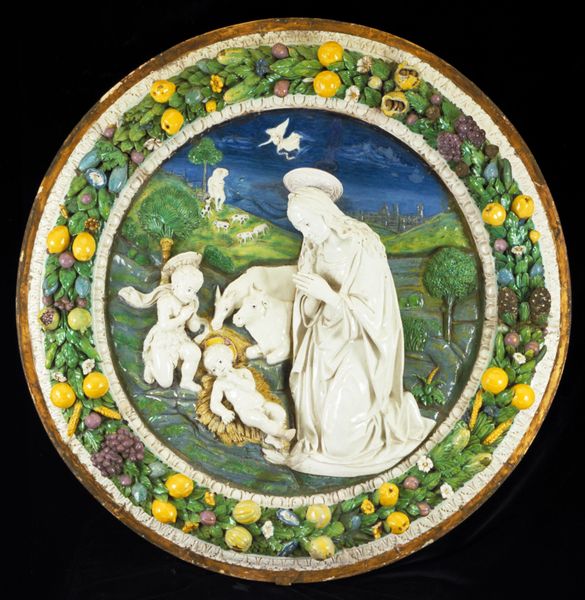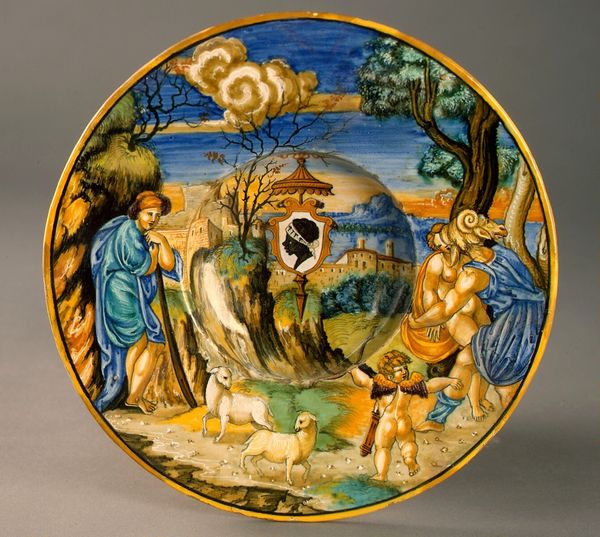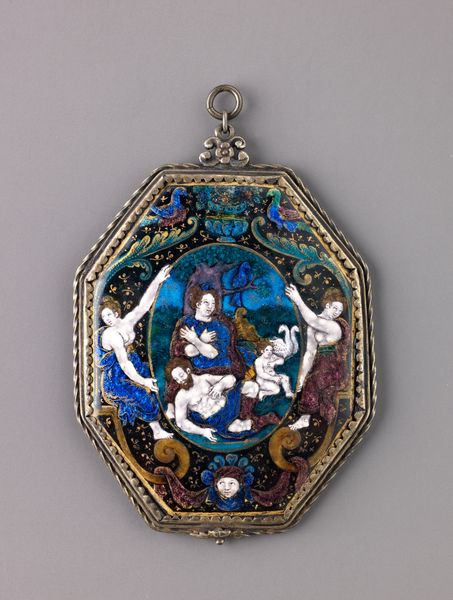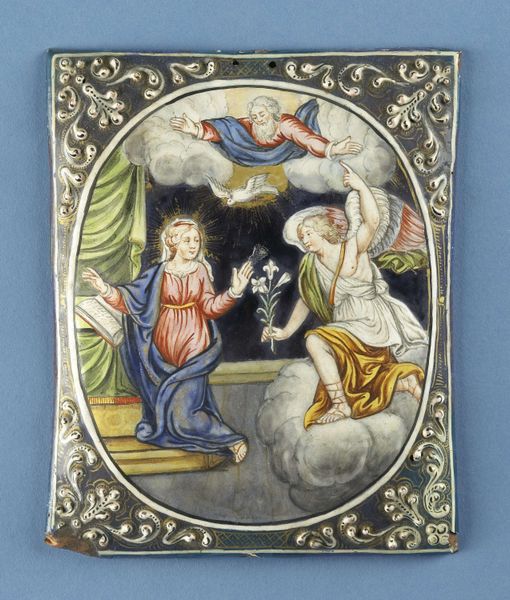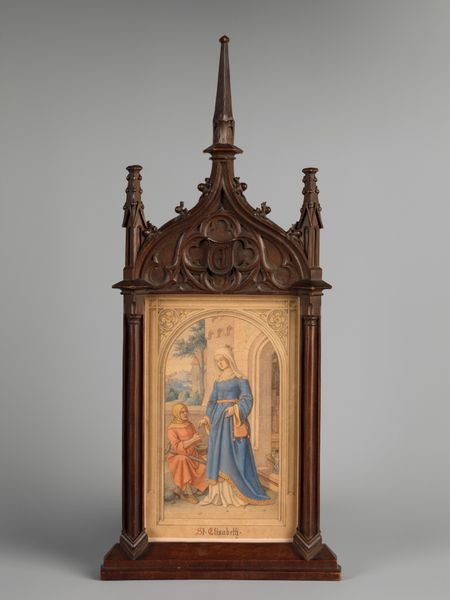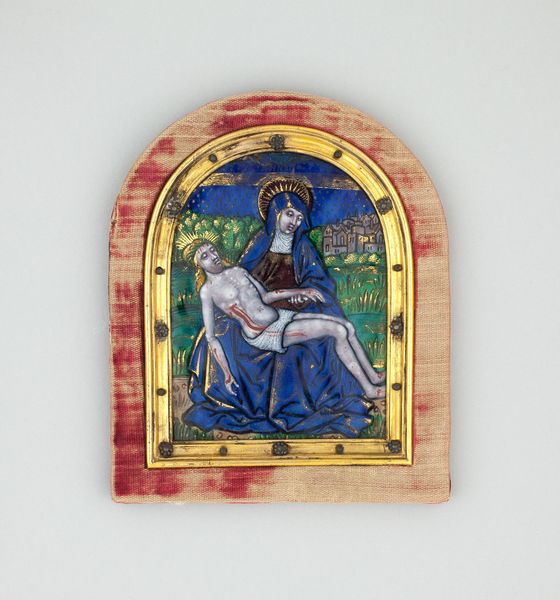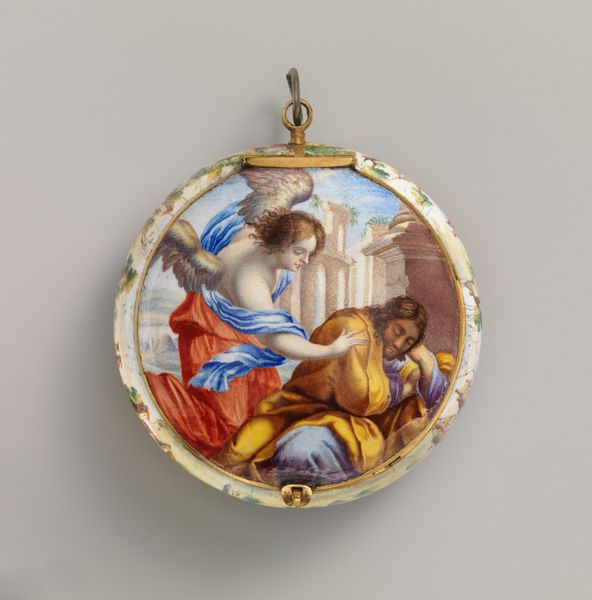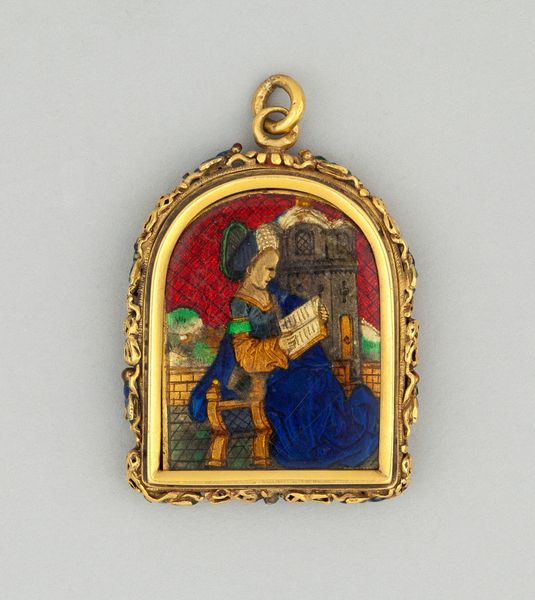
painting, enamel
#
baroque
#
painting
#
sculpture
#
landscape
#
figuration
#
enamel
#
history-painting
#
miniature
Dimensions: height 11.1 cm, height 10.2 cm, width 7.6 cm, thickness 1.2 cm
Copyright: Rijks Museum: Open Domain
Curator: This elegant hand mirror, crafted between 1640 and 1660, features enamel work by Jean Limosin, portraying Christ as the Good Shepherd. The precision and skill evident in such a miniature format is extraordinary. Editor: The first impression I get is one of calm, but there is this unusual inclusion of several dogs within what's typically a pastoral, gentle scene. What is their symbolism? Curator: The Good Shepherd is such a rich, established archetype. The dogs would not be traditional companions; lambs are far more common, of course, signifying innocence and meekness. This mirror offers an interesting challenge, though, suggesting loyalty, perhaps vigilance or active protection, qualities often linked with the shepherd's responsibilities. The dogs reframe the notion of care itself. Editor: So you’re seeing this as less about passive guidance, more active intervention in the world? Considering the period of its creation, the materials used and the patron employing Limosin would offer more information regarding the socioeconomic context. It’s fascinating that this portable object allowed for intimate moments of self-reflection while simultaneously invoking powerful religious narratives. Curator: Exactly, we must consider enamel’s value; the skill involved; the potential for courtly use; who exactly held this object; their labor, and also how and by whom such objects were used and consumed. Limosin's rendering, using delicate brushstrokes, brings forth a rich palette and invites closer examination. Editor: And how would we reconcile it within the broader development and use of devotional iconography in Baroque Europe? Is this highly-personalised representation of biblical narrative common within other practices? Curator: Yes, we can absolutely examine this enamel miniature alongside contemporary panel painting as the dialogue helps further an understanding of that same history painting or miniature. Editor: The inscription reinforces that theme, doesn't it? Paece oue meas, meaning "Feed my sheep" invites the user of the mirror to self-examine as a sheep being tended by Christ. What a concept that requires them to seek inward and upward! It makes the viewer both the observed and the observer within this grand theological narrative. Curator: And from a materialist perspective, what I find appealing is the intimate connection between labor and spirituality in the mirror's production and reception, reminding us how artworks themselves become charged with meaning beyond pure aesthetic consideration. Editor: Ultimately, tracing this artifact’s imagery unveils a potent intersection where personal reflection converges with powerful social metaphors around faith.
Comments
rijksmuseum about 2 years ago
⋮
The colourful enamel on this copper hand mirror represents Christ as the Good Shepherd. He protects his flock, which stands for the Christian community, by slaying a wolf. The meaning of the Latin inscription below the scene is ‘take care of my sheep’ and was Christ’s call to his apostles to continue his work.
Join the conversation
Join millions of artists and users on Artera today and experience the ultimate creative platform.
